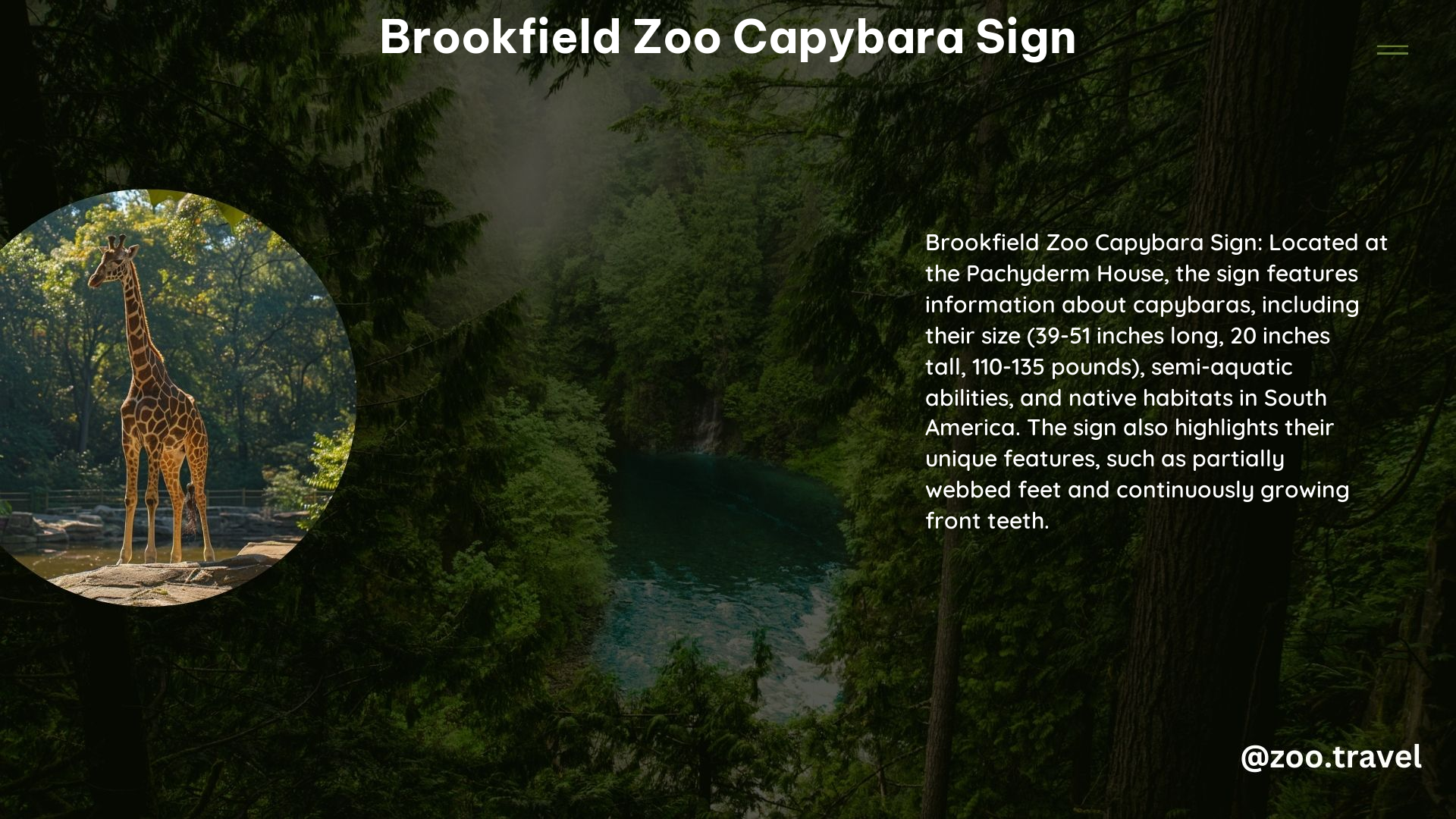The Brookfield Zoo Capybara Sign is part of the exhibit featuring the world’s largest rodents, the capybaras. This sign provides visitors with valuable information about these fascinating creatures, their native habitat, and their new home at the Brookfield Zoo.
Capybara Habitat and Characteristics
Capybaras are native to South America, specifically in rainforest, savannah, and wetland regions near rivers, ponds, streams, and lakes. These semi-aquatic rodents have several unique physical characteristics:
- Coarse Fur: Capybaras have coarse rufous fur on their back and legs, which turns into a brownish-yellow on their abdomen.
- Rounded Body: They have a rounded body, short face, and no tail.
- Webbed Feet: Capybaras have partially webbed feet, making them strong swimmers capable of staying underwater for up to five minutes. This adaptation helps them escape predators like jaguars, anacondas, and harpy eagles.
- Continuously Growing Teeth: Capybaras continuously grow their front teeth to compensate for wear from their diet of grasses and water plants.
Brookfield Zoo Capybaras

The Brookfield Zoo is home to three capybaras, two females and one male, ranging in age from 8 months to 2 years old. This is the first time capybaras have been present at the zoo since 1977, over 40 years ago.
The capybaras are housed in an outdoor habitat located on the northeast side of the Pachyderm House, providing them with a natural environment similar to their native South American habitats.
Capybara Signage
The capybara signage is located at the Pachyderm House, which is part of the capybara exhibit. This signage provides visitors with detailed information about the capybaras, their physical characteristics, and their natural behaviors.
Zoo Information
Brookfield Zoo is located at 8400 31st St, Brookfield, IL 60513. The zoo is open from 9:30 AM to 6:00 PM (April 1 – September 30) and 9:30 AM to 5:00 PM (October 1 – March 31). Admission fees vary by age and residency, so visitors should check the zoo’s website for current rates.
Adoption and Support
Brookfield Zoo offers various adoption packages, ranging from $35 to $2,000, which support the care of the capybaras and other animals at the zoo. These adoption packages provide an opportunity for visitors to contribute to the well-being and conservation of these unique creatures.
In conclusion, the Brookfield Zoo Capybara Sign is a valuable resource for visitors to learn about the world’s largest rodents and their new home at the zoo. By exploring the exhibit and supporting the zoo’s conservation efforts, visitors can gain a deeper appreciation for these fascinating animals and their natural habitats.
References:
– Brookfield Zoo. (n.d.). Capybara – Animals at Brookfield Zoo Chicago. Retrieved from https://www.brookfieldzoo.org/Brookfield-Zoo/Animals/Capybara
– Brookfield Zoo. (n.d.). Capybara – Carsie – Brookfield Zoo. Retrieved from https://www.brookfieldzoo.org/CarsieCapybara
– Brookfield Zoo. (2021). Capybaras Make New Home at Brookfield Zoo. Retrieved from https://www.brookfieldzoo.org/Brookfield-Zoo/About-%282%29/Press-Room/Press-room-old/2021-Press-Releases/Capybaras-Make-New-Home-at-Brookfield-Zoo
– ZooChat. (2021). Capybara Signage – Pachyderm House – ZooChat. Retrieved from https://www.zoochat.com/community/media/capybara-signage-pachyderm-house.542538/.
